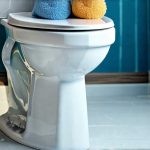Frequent urination can significantly impact daily life, especially for men who may find it disrupts work, social activities, and overall peace of mind. It’s not simply about inconvenience; the constant awareness of needing to find a restroom can create anxiety and stress, leading to reduced confidence and even social isolation. Understanding that frequent urination isn’t always a sign of something serious is important – lifestyle factors, dietary choices, or temporary conditions can often play a role. However, it’s also crucial to rule out underlying medical causes with a healthcare professional. This article focuses on practical daily planning strategies for men experiencing this challenge, aiming to empower them to regain control and minimize disruption in their routines. It’s about adapting and thriving, not just coping.
Many men understandably feel uncomfortable discussing urinary issues, leading to delayed seeking of help or avoidance of proactive management. The stigma surrounding these conditions needs to be addressed, as open communication with doctors is vital for proper diagnosis and care. Beyond medical intervention (which should always take priority if a doctor recommends it), strategic daily planning can make an enormous difference in quality of life. This isn’t about restricting activities; it’s about anticipating needs and creating a framework that allows you to live fully, confidently, and without constant worry. A well-thought-out plan provides peace of mind and reduces the mental burden associated with frequent urination.
Proactive Route Planning & Restroom Awareness
Planning your routes – whether for commuting, running errands, or leisure activities – becomes a key skill when dealing with frequent urination needs. This isn’t about limiting where you go; it’s about knowing where facilities are available and factoring that into your journey. Before leaving home, take a moment to map out potential restroom stops along the way using apps like Flush (which crowdsources restroom locations), Google Maps (searching for “restrooms”), or even simply checking store directories online. Don’t rely solely on assumptions; verify availability when possible, especially for smaller establishments. To further refine your dietary choices and support overall urinary health, consider exploring a well-balanced diet tailored to men experiencing frequent urination.
This proactive approach extends beyond identifying restrooms. Consider factors like traffic density and potential delays that could prolong your journey. A longer route with readily available facilities might be preferable to a shorter one with limited options. It’s also wise to scout out restroom conditions if you have specific needs – accessibility, cleanliness, privacy. This level of preparation isn’t obsessive; it’s empowering. Knowledge is power, and in this context, knowledge translates directly into reduced anxiety and increased freedom.
Furthermore, building awareness of restroom locations in your regular environments—workplace, gym, favorite cafes—is essential. Identify backup options too. Knowing where the less-used restrooms are located can be invaluable during peak times or emergencies. Don’t hesitate to ask colleagues or staff about restroom availability or accessibility features if needed. This isn’t a sign of weakness; it’s responsible self-management. For men who also experience discomfort related to prostate health, incorporating specific daily meals can provide additional support.
Hydration Strategies & Timing
Hydration is critical for overall health, but managing fluid intake when you have frequent urination needs requires a nuanced approach. Simply restricting fluids isn’t the answer, as dehydration can lead to concentrated urine that irritates the bladder and potentially worsens symptoms. Instead, focus on strategic hydration – distributing your fluid intake evenly throughout the day rather than consuming large amounts at once.
- Sip water consistently: Carry a reusable water bottle and take small sips regularly.
- Time fluids carefully: Avoid drinking large volumes of liquid before meetings, long car rides, or bedtime. Consider shifting most of your intake to earlier in the day.
- Be mindful of fluid types: Certain beverages can exacerbate frequent urination – caffeine, alcohol, carbonated drinks, and artificial sweeteners are common culprits. Experiment with alternatives like herbal teas or infused water.
The goal isn’t to eliminate fluids but to optimize your intake for comfort and control. Pay attention to how different liquids affect you personally, as sensitivities vary. Maintaining a hydration diary for a few days can help identify patterns and adjust accordingly. Remember that individual needs differ based on activity level, climate, and overall health. Understanding the link between diet and urinary health is key; exploring daily meal tips for men with frequent urge can be beneficial.
Managing Urgency & The “Just In Case” Mentality
The feeling of urgency – the sudden, compelling need to urinate – is often one of the most distressing aspects of frequent urination. Learning techniques to manage this urge can significantly reduce anxiety and prevent accidents. One effective method is urge suppression, which involves consciously delaying urination for a few minutes when you feel the sensation arise. This isn’t about holding it indefinitely; it’s about retraining your bladder and building confidence in your ability to control urgency.
- Start small: Begin with short delays – just a minute or two – and gradually increase the duration as you become more comfortable.
- Distract yourself: Engage in mental exercises like counting backward, reciting poetry, or focusing on your breathing. This helps divert your attention from the urge.
- Pelvic floor exercises (Kegels): Strengthening these muscles can improve bladder control over time.
However, it’s important to avoid developing a “just in case” mentality – constantly going to the restroom even when you don’t truly need to. This can paradoxically worsen frequent urination by reinforcing the habit and reducing bladder capacity. The key is to find a balance between managing urgency and avoiding unnecessary trips. Listen to your body, but also challenge yourself to resist impulsive behaviors.
Clothing & Accessory Considerations
While often overlooked, clothing choices can play a surprising role in managing frequent urination. Loose-fitting, comfortable garments are preferable to restrictive clothing that puts pressure on the bladder or abdomen. Avoid tight jeans, belts, or underwear that constrict your movement. Consider fabrics that are breathable and moisture-wicking, especially if you experience any leakage.
For men who worry about accidents, discreet absorbent products – pads or liners specifically designed for urinary incontinence – can provide peace of mind and allow them to participate in activities without fear. These products are readily available at pharmacies and online retailers. However, it’s important to choose a product that is appropriate for your level of need and to change it regularly to maintain hygiene.
Finally, consider carrying a small “go bag” – a discreet pouch or backpack containing essential items like:
– A spare pair of underwear
– Wet wipes
– A plastic bag for disposing of any soiled clothing
– Hand sanitizer
This proactive preparation can alleviate anxiety and minimize embarrassment in unexpected situations. Furthermore, consider incorporating daily planning strategies that build in flexibility to accommodate these needs.
To support overall pelvic health and potentially reduce urinary symptoms, explore the benefits of mobility exercises designed for men with pelvic pain.
If you’re experiencing significant distress or have concerns about underlying medical conditions, don’t hesitate to seek professional help. A healthcare provider can accurately diagnose the cause of your frequent urination and recommend appropriate treatment options. Learning more about what’s normal for men over 50 can also provide valuable context.





















